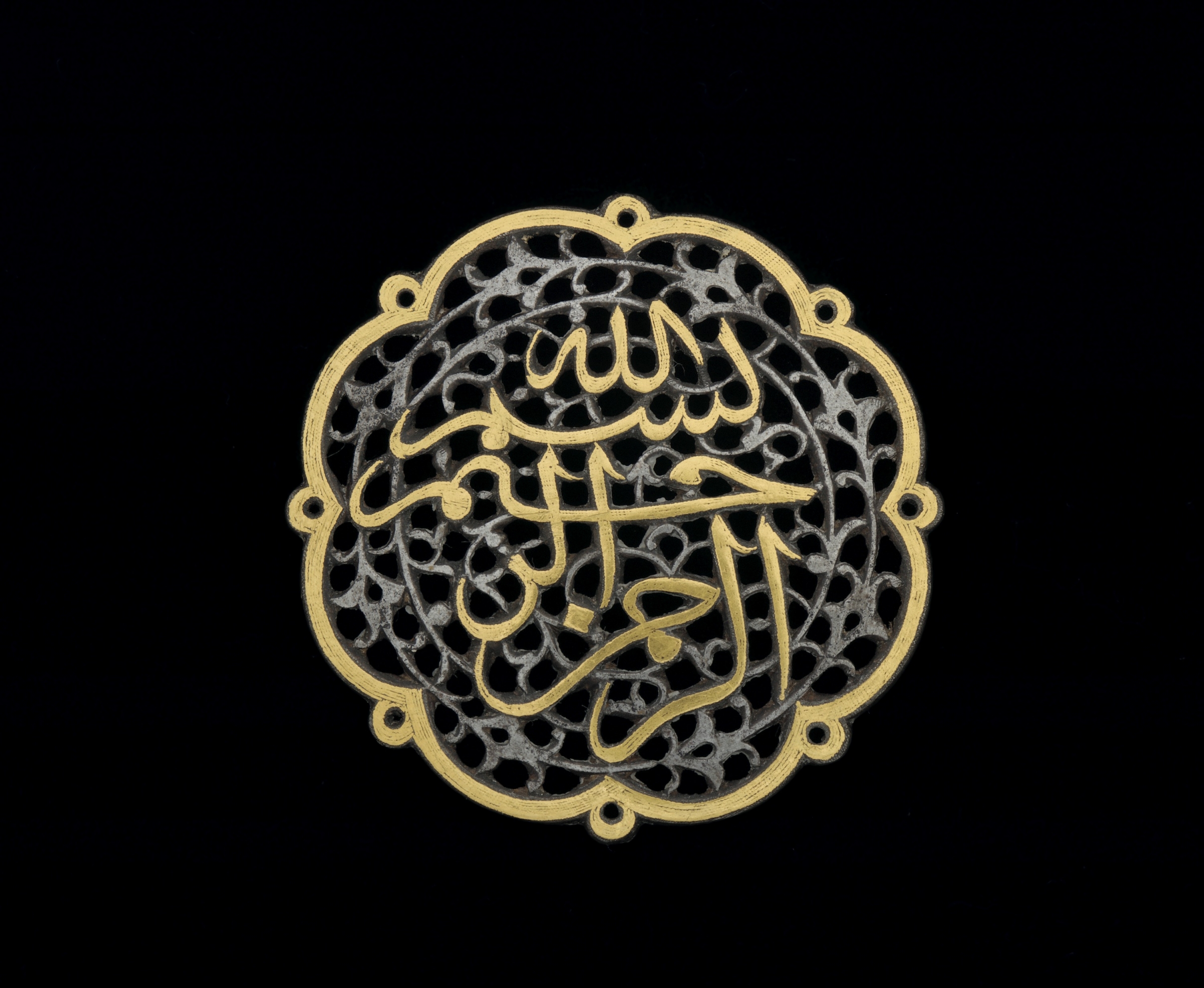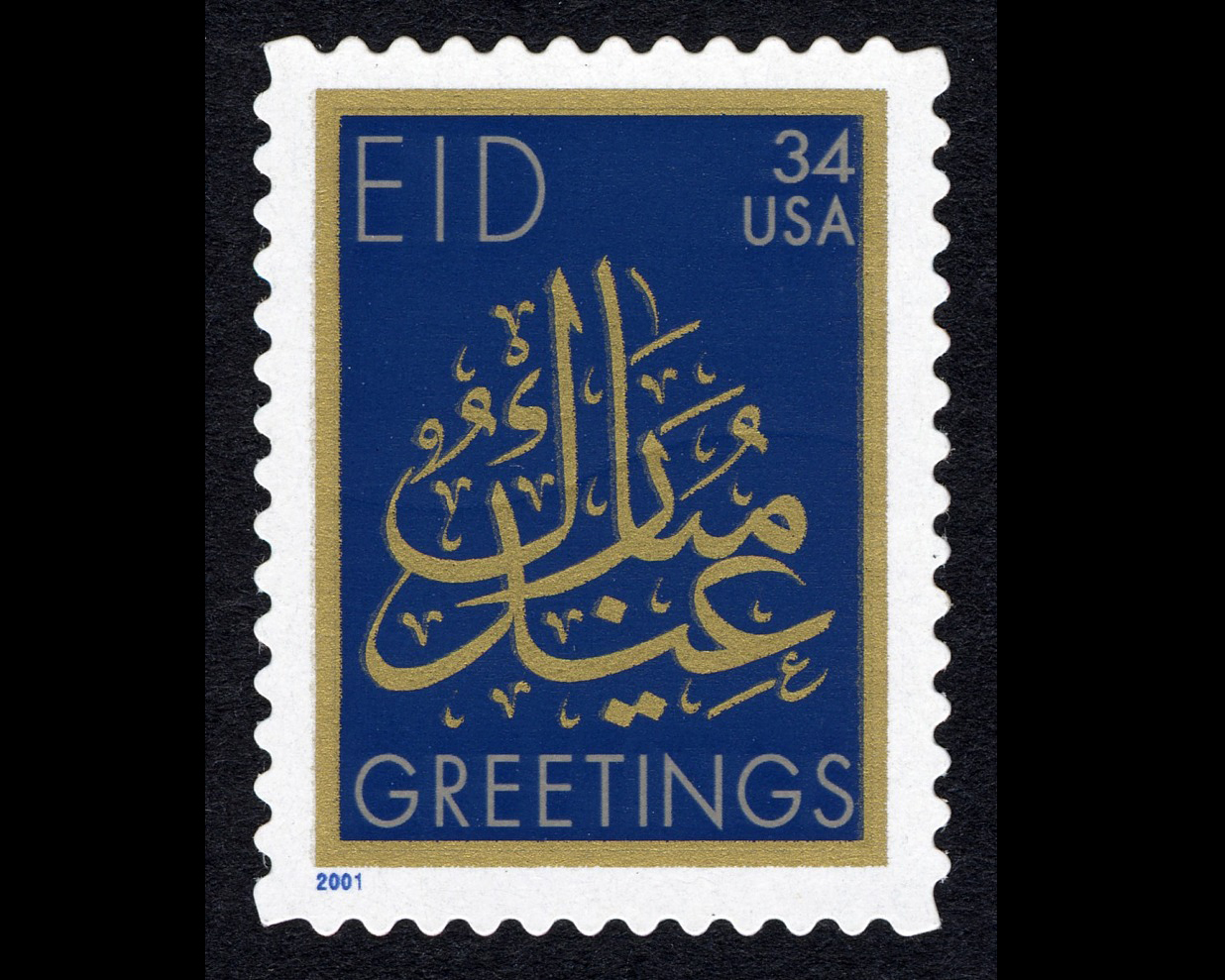Eid Mubarak!
Calligrapher Mohamed Zakariya designed this 2001 stamp in the collection of the Smithsonian’s National Postal Museum. It commemorates the two most important festivals in the Islamic calendar: Eid al-Fitr and Eid al-Adha.
Eid al-Fitr (or "The Feast of Breaking the Fast") marks the end of Ramadan, the month of fasting. It is often observed by offering special alms with prayers, feasting, exchanging gifts, and visiting family and friends. Eid al-Adha comes at the end of the annual period of pilgrimage to the holy city of Mecca.
The "Eid Mubarak" phrase in calligraphy translates literally as “blessed festival” and can be paraphrased as “May your religious holiday be blessed."

This steel and gold ornament is decorated with a concentric scroll of lotus blossoms and leaves. Over the scroll is the "basmala”—"In the name of God, the Compassionate, the Merciful"—the phrase that appears at the beginning of each chapter of the Qur'an. The invocation is said before starting any activity, such as breaking fast at dusk.
The ornament is from the Safavid period of 16th–17th century Iran; it is now in the Freer Gallery of Art.

